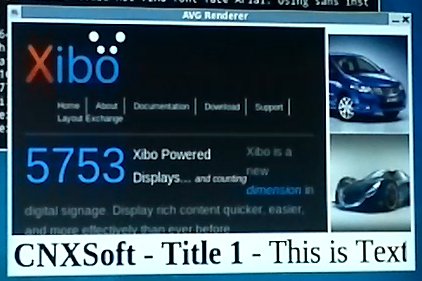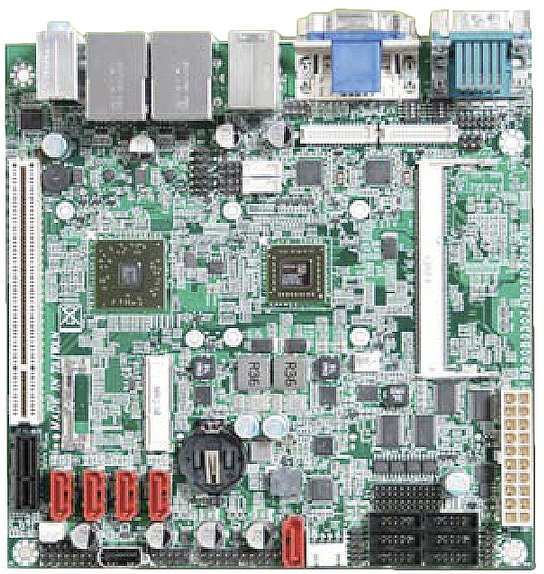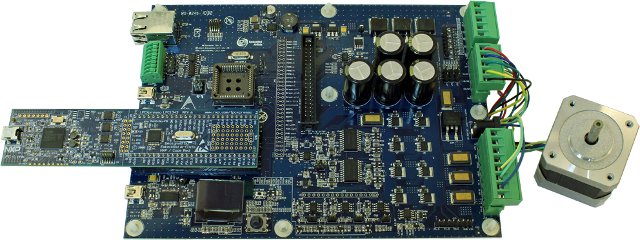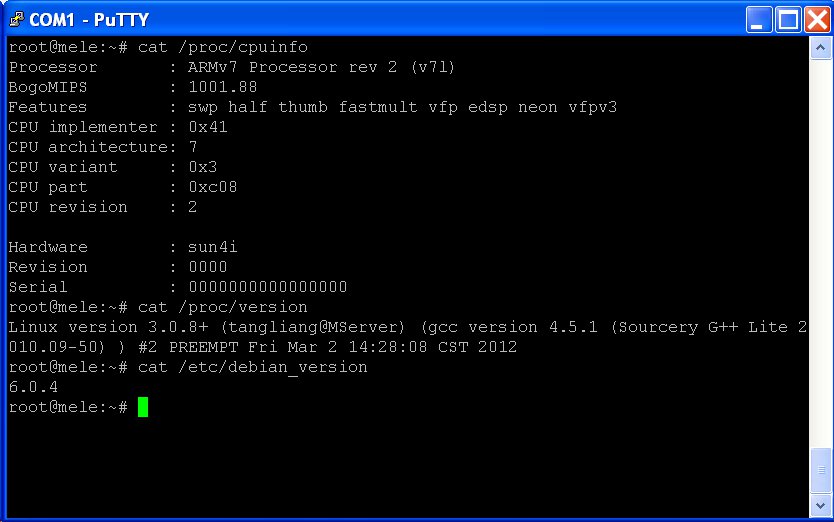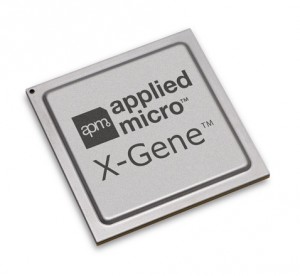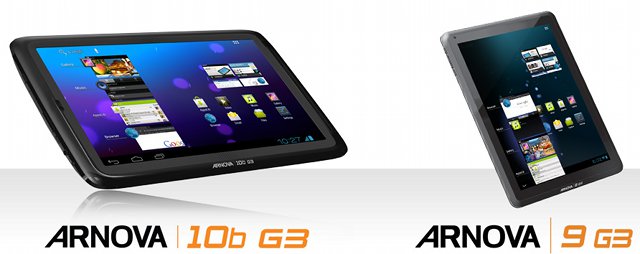Those following my blog know that I recently bought a Mele A1000 to play around. For those who are not familiar with this device, the Mele A1000 is a $70 Android set-top box featuring an AllWinner A10 cortex A8 processor and lots of peripherals, and it can easily be hacked to run a Linux distributions. This hardware would also be a great digital signage player thanks to its video playback capabilities: up to 2160p video decoding and 1080p video output. Last year, I ported Xibo, an open source digital signage player, to ARM and ran it in the Beagleboard emulator (qemu), but I hadn’t had the opportunity to try it out in a real hardware. I’ve tried this rootfs based on Linaro ARM Linux Internet Platform (ALIP) image for BeagleBoard in the Mele A1000, by following an adaptation of the method I provided earlier. For this demo, I created a […]
Cube U30GT Android 4.0 10.1″ Tablet Powered by Rockchip RK3066
Alldocube Technology and Science will manufacture one of the first Android 4.0 tablet based on the new Rockchip RK3066 Dual Cortex A9 Processor: the Cube U30GT which will sell under 51cube.com brand. Here are the specs of the device: CPU – RK3066, Cortex-A9 Dual Core processor 1.6 GHz GPU – Quad Core Mali 400 with OpenGL ES 2.0/1.1, OpenVG1.1 RAM – 1GB DDR3 Storage – 16 GB NAND FAST / microSD Card slot (Support up to 32G) Display – 10.1″ capacitive touch screen (1280×800) Camera: 2.0 MPixel front camera 2.0 MPixel rear camera Sensors – 4-way G-sensor Connectivity – Wi-Fi b/g, Bluetooth and 3G (via external 3G dongle). Battery – Up to 4 hours movie playback,up to 12 hours music playback and up to 6 hours web page browsing. Weight – 450 grams Charbax discovered this tablet last month in Hong Kong. You can watch the video below to have a closer […]
Portwell AMDY-7000 Series Mini-ITX Boards Based on AMD Embedded Processors
American Portwell Technology has announced the AMDY-7000 Series Mini-ITX embedded system boards targeting applications that require high quality graphics output with low power consumption such as digital signage, surveillance security monitoring, point of sales (PoS) and more. The company provides 3 families of AMDY-7000 series mini-ITX boards: AMDY-7000 – Single-core AMD Athlon II Neo R44L processor. AMDY-7001 – Dual-core AMD Turion II Neo N54H, AMD Athlon II Neo N36L or single-core AMD Athlon II Neo R44L processor. AMDY-7002 – Dual-core AMD Fusion G T56N processor. The AMDY-7000/7001/7002 Series models are powered by AMD Fusion processors featuring ATI HD 6320 and HD 4200 GPU. Depending upon the model, the power consumption ranges from a 12W to 25W. All boards can support up to 8GB DDR3 SO-DIMM memory, dual display via VGA/DVI/HDMI/LVDS and dual LVDS (AMDY-7002 only), PCIe x1, PCIe x16 or half-size mini-PCIe depending on the model and dual Gbit Ethernet. […]
Ziilabs ZMS-40 Decodes 6 HD Videos and Maps them to 3D Objects Simultaneously!
Ziilabs uploaded an impressive video that shows the Ziilabs ZMS-40 simultaneously decoding 6 High Definition Videos (although they don’t say if it’s 720p or 1080p) with 5 H.264 videos and 1 VP8/WebM video and rendering them on 3D objects via OpenGL ES. That’s quite amazing, but the next question could be why would you need that much processing power in a chip aimed at tablets? Augmented reality perhaps… Jean-Luc Aufranc (CNXSoft)Jean-Luc started CNX Software in 2010 as a part-time endeavor, before quitting his job as a software engineering manager, and starting to write daily news, and reviews full time later in 2011. www.cnx-software.com
Embedded Artists NXP LPCXpresso Motor Control Kit Promotion
Embedded Artist and NXP have jointly designed the LPCXpresso Motor Control Kit to easily get started with motor control prototyping. This platform is based on NXP LPCXpresso MCUs and can control BLDC (Brushless DC), BLAC (Brushless AC), stepper and dual brushed DC motors. This is not a new design (2010), but Embedded Artist and NXP are discounting their development kit by 50% for a limited period, which brings the price of the kit to 149 Euros, instead of 299 Euros. The kit includes: LPCXpresso Motor Control Board LPCXpresso LPC1114 Board (The “stick” on the left in the picture above) LPCXpresso Eclipse-based IDE and GNU compiler BLDC Motor with hall sensors 24V Power supply (60W) Here are the specifications of the Motor Control Board: Controller MCU • Socket for LPCXpresso LPC1114 and LPC1343 • Socket for LPCXpresso LPC176x • Socket for LPC1xxx in PLCC44 • Expansion connector for control by LPC1800/LPC4000/LPC2900 […]
How to Create Your Own Debian / Ubuntu Image for Mele A1000 (AllWinner A10 Based STB)
Developers working on AllWinner A10 have released an Ubuntu 10.04 LTS SD card image (4GB) for the Mele A1000. I’ll show how you can create your own Debian or Ubuntu image based on this image for any size of SD Card using Debian 6.0 (Squeeze) and the recent Ubuntu 12.04 (Precise Pangolin) as example. The current image is not perfect, for example Ethernet doesn’t work (but you can still get network connectivity with WiFi), the NAND flash can not be accessed, the system does not appear to be very stable when running X and a few more issues. But this will be fixed by the developer community over time. First download the SD card image wget http://hands.com/~lkcl/mele-ubuntu-lucid.img.lzma Install 7z (if you don’t have it yet) and decompress the file: sudo apt-get install p7zip-full 7z x mele-ubuntu-lucid.img.lzma The decompressed size is 4008706048, which might be larger than your 4GB SD Card […]
AppliedMicro Unveils ARMv8 64-bit Apache 2 Implementation for X-Gene SoC
Last year, Applied Micro announced their Gene-X 64-bit ARMv8 core at ARM Techcon 2011, and showed a minimal demo based on Xilinx Virtex-6 FPGA booting Linux ARM 64-bit to the command line. Since then, the company has made progress and just announced the availability of an Apache 2 web server implementation on their 64-bit ARMv8 X-Gene Server-on-Chip. This is the very first implementation of a fully-functional server platform running a real-world application on 64-bit ARM-based processor, said Vinay Ravuri, Vice President and General Manager of Processor Products at AppliedMicro. The platform is now capable of running a full LAMP (Linux, Apache, MySQL and PHP) software stack. Back in 2011, the company announced ARMv8 support for Linux would be developed by Redhat and be available in Fedora. This 64-bit ARM web server implementation enable OEMs, ODMs, Cloud Service Providers, Independent Software Vendors and other development partners to conduct early stage performance benchmarking and […]
Archos Arnova G3 Tablets: Arnova 10b G3 and Arnova 9 G3
Archos has announced (actually just listed them on their website) the third generation low cost Arnova tablets based on Rockchip RK2918 (Cortex A8 @ 1GHz) with 1 GB RAM and running Android 4.0 (ICS) with Arnova 10b G3 and Arnova 9 G3 Here are the specifications of the devices: CPU • Rockchip RK2918 (Cortex A8) @ 1 GHz System Memory • 1GB RAM Operating system • ANDROID 4.0 Capacity • Flash memory: 8 GB or 4 GB • Extendable via micro SDHC Slot Display characteristics • Arnova 10b G3 – 10.1” Resistive Dual Touch screen, TFT LCD (Resolution : 1024 x 600) • Arnova 9 G3 – 9.7″ Capacitive 5 points MultiTouch Screen with IPS Technology (Resolution: 1024 x 768) Video Playback • H.264 up to 1080p resolution – 30 fps • MPEG-4– 30 fps • Container formats: .avi .mp4 ,mkv, .mov, and .flv Audio Playback • MP3, WAV, APE, […]


